If you’re shooting with a regular lens on your camera, filling the frame with LEGO minifigures often means composing with crop in mind, wasting pixels in edit, and ending up with a lower quality image.
This is why many LEGO photographers shoot with dedicated macro lenses: you can get tack sharp, close-up shots without sacrificing any pixels. Not to mention the added benefit of a shallow depth of field that macro lenses provide.
Macro lenses can be an investment of at least a few hundred dollars though but luckily, there are a few accessories you can buy for your camera that won’t take much away from your LEGO budget and allow you to whet your macro appetite.
Extension Tubes for Cameras
An extension tube is just a hollow cylinder that you put between your lens and the camera body. They can magnify because they move the lens further away from the sensor and the glass closer to the subject.

There are a lot of low-cost, well-built extension tubes with electrical connections available on Amazon or eBay for under $50 so this is one of the cheapest ways to get near macro capabilities. Electrical connections pass information between your camera and your lens so you can still control things like aperture and focus.
You can buy even cheaper extension tubes without the connections for under $20, but you’d be stuck shooting wide open, which is not really a good thing for close-up photography. If you can afford it, buy metal extension tubes with electrical connections that are compatible with your camera.
For the test shots, I used the Sony 16-50mm f/3.5-5.6 lens that came with my camera and Neewer extension tubes. This was actually the first close-up kit I used many years ago:

Here are the results:
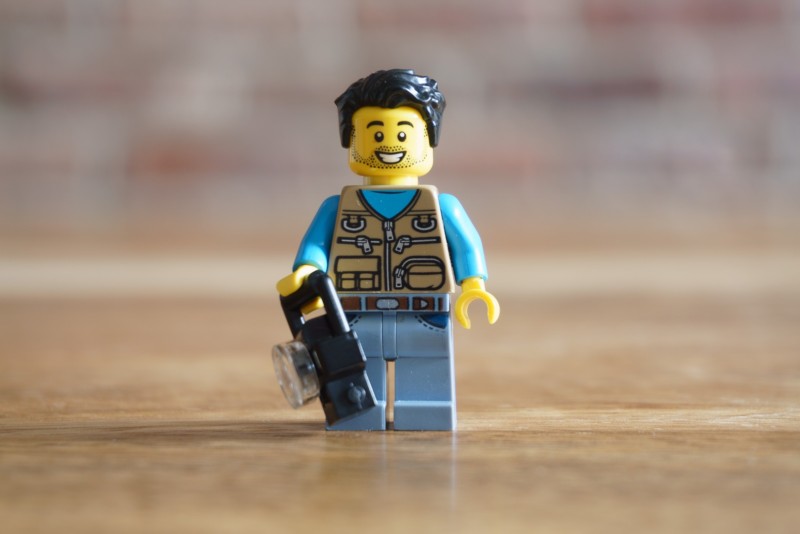


These were all shot at the long end of the zoom lens, f/5.6 at 50mm. The magnification achieved with extension tubes on shorter focal length lenses (under 80mm) such as my old kit lens is pretty impressive.
However, this particular lens isn’t spectacular to begin with so the lack of sharpness is even more apparent when magnified.
Because there’s no glass in between, using extension tubes doesn’t further degrade the quality of the image but there is a loss of light. They also make your lens longer, so camera shake comes into play.
Another thing to notice is how shallow the depth of field has become, creating a much smoother and cleaner background.
Extension tubes are a great option if you own just the lens that came with your camera, or a prime lens with a shorter focal length. I used extension tubes with the very sharp Sigma 30mm 2.8 prime lens before upgrading to a dedicated macro lens and got great results.
If you don’t have a camera with interchangeable lenses, or if you have a lens with a focal length greater than 80 mm, you might want to consider a close-up filter instead.
Close-up filters for cameras
Close-up filters, often called macro filters, are additional glass elements you put in front of your lens. Unlike extension tubes, these do adversely affect sharpness and increase distortion so it’s important to buy the best close-up filter you can afford.
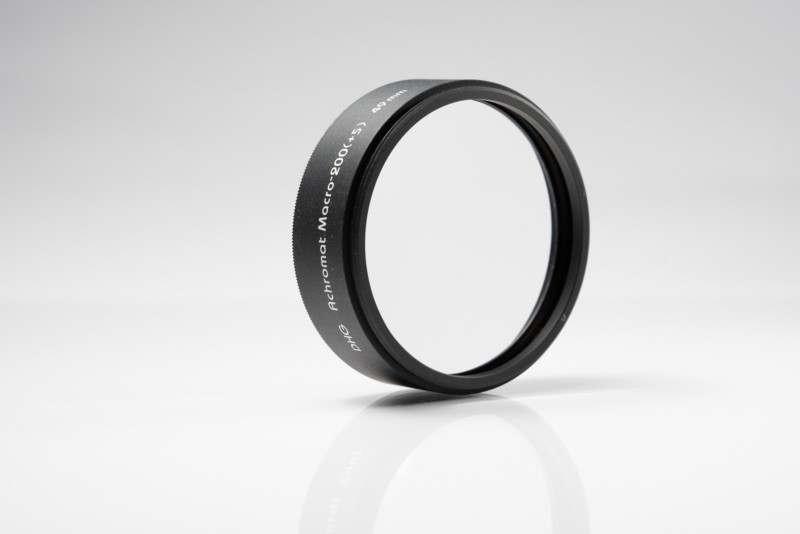
Avoid the cheap stacking filter sets altogether and go for a single, powerful filter such as a Raynox 250 or Marumi Achromat 200 for about $65. Not only will your images come out better, it’s far more convenient to screw on and clean just one filter than it is three.
For the test shot with the Marumi Achromat 200, I used the same Sony 16-50mm f/3.5-5.6 kit lens at its longest focal length of 50mm and widest aperture of f/5.6:
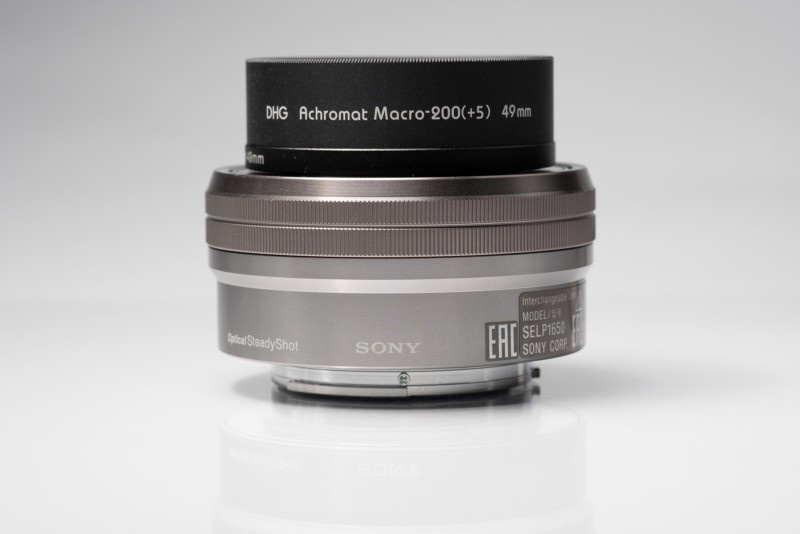

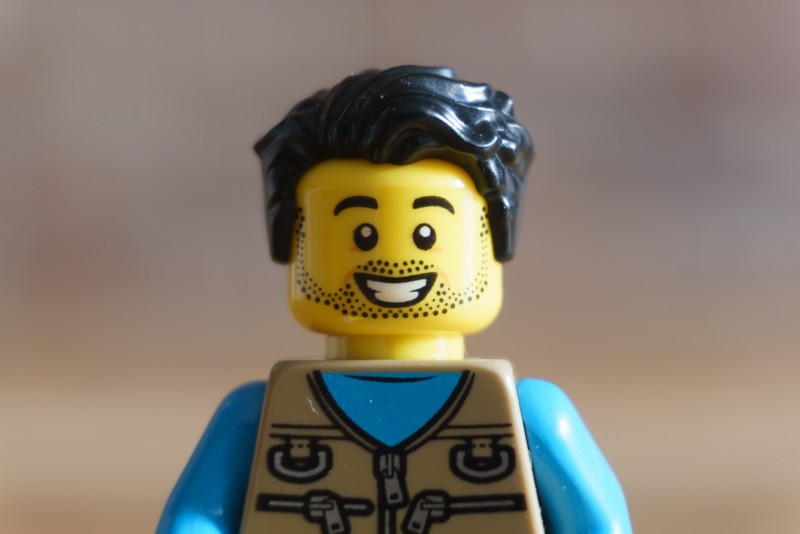
As with the extension tubes, the depth of field becomes more shallow, allowing you to isolate the subject effectively and create a nice out-of-focus background. There is also a loss of light but not as much with a high-quality close-up filter.
Close-up filters are great if you have a longer lens on your camera. You might also want one if you have filter threads on a fixed lens camera.
Conclusion
If you want to start shooting macro photos of your LEGO minifigures but don’t want to make a big investment in a dedicated lens, extension tubes or close-up filters are both good options.
You can even go wild and stack extension tubes and close-up filters to get much closer!
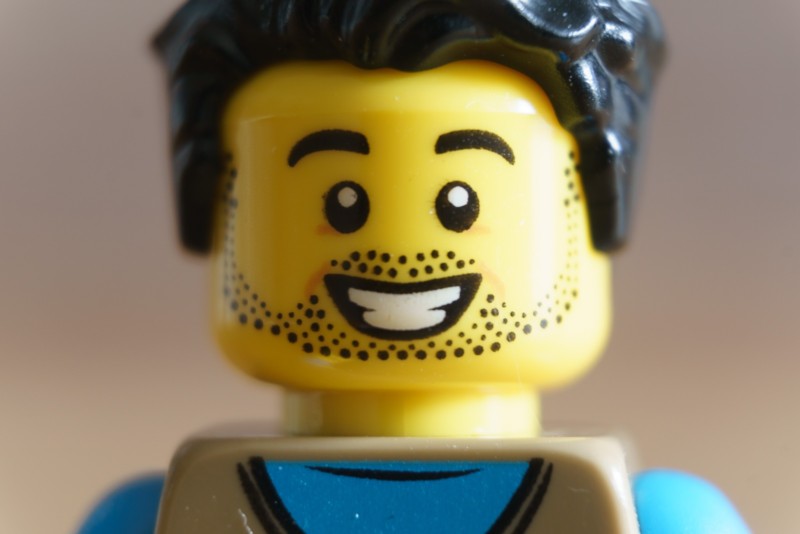
Both accessories can take your lens to near-macro level of magnification but can also give you the smooth, out-of-focus background and shallow depth of field characteristic of a macro lens.
The drawback is that the sharpness of the image depends on the quality of the lens you use with the extension tubes or close-up filters. A kit lens like the one I shot with for this post isn’t going to get sharper, rather, the softness will be magnified.
Here’s what a kit lens delivers compared to a macro lens in terms of sharpness:


(Note: These photos were framed similarly to demonstrate only sharpness, not magnification and results with a better lens such as a Sigma 30mm 2.8 are much sharper than with the Sony kit lens.)
There’s an even cheaper option for pseudo-macro photography which I didn’t mention: taking your lens off and mounting it on your camera backwards with a $3 reversing ring.
The reason I don’t like this option is that it exposes the delicate electrical connections. I just don’t think it’s worth the risk of damaging your lens when extension tubes and close-up filters offer similar results.
I think shooting LEGO minifigures at a macro or near-macro level is something that every LEGO photographer should try and now with these affordable and easy to use accesories, there’s no reason not to.

Great article, I have been wanting to learn more about the extension tubes and benefits. The dream is for some better lenses but sadly this takes awhile to save for such a big investment.